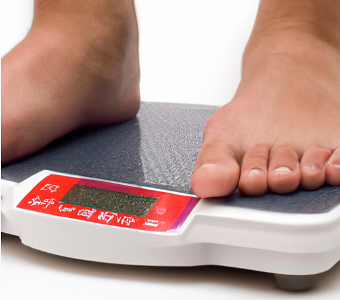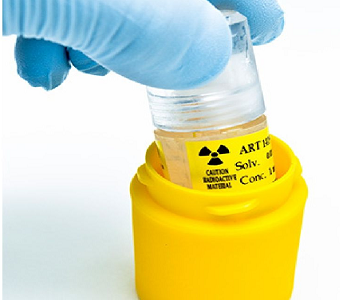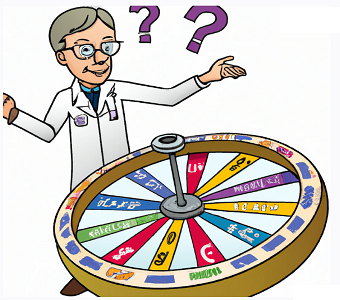UniQure NV (QURE) is a Dutch commercial-stage biotechnology company pioneering therapeutics in the gene therapy field, also the developer of Glybera, the first and only gene therapy product to receive regulatory approval in the European Union. Despite this, uniQure carries a comparatively low valuation next to clinical-stage gene therapy peers, many of which have gone public only in the last two years. These include bluebird bio (BLUE), Avalanche (AAVL), and most recently Spark Therapeutics (ONCE) Spark priced its initial public offering at $23 on Thursday and traded as high as $51.9 in the Friday session, valuing this latest gene therapy entrant at ~$1.2B (closing price of $50).
We see uniQure as a dark horse in the field, in-part because of numerous catalysts in 2015 that will put fresh eyes on this European company. UniQure IPO’d in early 2014 and only began to capture attention in the second half of the year.
Our thesis centers around the fact that uniQure is a commercial-stage, fully integrated (manufacturing) gene therapy company with two value-driving events this year: Glybera’s European commercial launch in the 1st quarter of 2015 and phase I/II data for uniQure’s hemophilia B product candidate around mid-2015.
UniQure’s hemophilia B program is marginally lagging a similar therapeutic at Baxter International (BAX), and Baxter could have data on its own program sometime this year. “When” is a complete unknown. Meanwhile, Spark will also bring its hemophilia B candidate into the clinic this year. Spark has captured the attention of Wall St, in-part, because the hemophilia program is partnered with Pfizer (PFE). That’s certainly compelling, but we outline in this report why uniQure may have a leg up on the competition. Finally, we point to the valuation disparity between QURE and SPARK – $375 million vs $1.2 billion. We suspect this gap will continue to close in 2015.
Glybera: The first gene therapy approved in the EU for the treatment of severe LPLD
Lipoprotein lipase deficiency (LPLD) is a rare autosomal recessive genetic disease caused by diminished or absent LPL enzyme protein expression – a result of a mutated LPL gene. The LPL enzyme is required by tissues in the body to process chylomicrons, also called triglyceride-carrying (fat) particles. Without adequate LPL enzyme activity, chylomicrons will build up in the blood potentially leading to severe hyper-chylomicronemia and chronic pancreatitis. Relatively large chylomicrons clog pancreatic ducts leading to painful and potentially life-threatening pancreatic inflammation. Individuals diagnosed with LPLD are required to adhere to an extremely low-fat diet and abstain from alcohol to ameliorate the chances of severe chronic pancreatitis.
The therapeutic goal of treating LPLD is to lower chylomicron blood plasma concentrations, after which pancreatic ducts have a lower chance of becoming clogged, thus reducing the risk of potentially life-threating pancreatitis and LPLD-related complications. In theory, LPLD could be treated with LPL-enzyme replacement therapies; however, this has thus far not been possible due to the short half-life of the enzyme.
Prior to Glybera’s EU approval, there was no approved therapy for the treatment of LPLD.
What is Glybera?

Glybera (Alipogene tiparvovec) is designed to restore LPL enzyme activity by delivering the functional human LPL gene variant LPLS447X in a replication-deficient recombinant adeno-associated virus serotype 1 (rAAV1) vector (shown above). The Glybera drug product is a sterile solution for injection presented in single-use vials containing 3E12 genomic copies (gc) of alipogene tiparvovec. Glybera is administered once at multiple intramuscular injection sites at a dose of 1E12 [gc/kg].
Glybera Clinical Trial and Regulatory Overview
Glybera was tested in 3 early clinical trials. These three trials formed the basis for uniQure’s (then known as Amsterdam Therapeutics) marketing authorization application in the EU for Glybera in December of 2009. The EMA rejected the application, and it was not until October 2012 – after lengthy back in forth between uniQure and regulatory agencies – that Glybera received marketing authorization from the EMA for use in individuals diagnosed with severe LPLD. The EMA initially rejected Glybera due to insufficient evidence of a clinical benefit. It was not until the data matured (longer-follow-up), and combined data from all three trials were available, that there was sufficient evidence of Glybera’s long-term clinical benefit to warrant an approval. These three trials are summarized in the table below:
| Glybera Early Clinical Summary | |||
| AMT-10-01 [1] | AMT-11-01 [2] | AMT-11-02 [3] | |
| Product | AAV1-LPLS447X (mammalian mfg.) |
Glybera (baculovirus mfg.) |
Glybera (baculovirus mfg.) |
| Trial Design | Phase I open-label dose escalation | Phase II open-label dose escalation | Phase II/III open-label + immunosuppressive regimen |
| Efficacy Endpoint | >40% Reduction in fasting plasma triglycerides | >40% reduction in fasting plasma triglycerides 3-12 weeks after therapy | >40% reduction in fasting plasma triglycerides 12 weeks after therapyAchieve improved clearance of post-prandial chylomicrons |
| Dose | 1E11 [gc/kg] (n=4) 3E11 [gc/kg] (n=4) |
3E11 [gc/kg] (n=2) 3E11 [gc/kg] + immunosuppressive regimen (n=4) 1E12 [gc/kg] + immunosuppressive regimen (n=8) |
1E12 [gc/kg] (n=5) |
| Results | All subject demonstrated a reduction in fasting plasma triglycerides (3/8 subjects had >40% reduction) |
7/14 subjects achieved the primary endpoint of >40% reduction in fasting plasma triglycerides | 3/5 patients demonstrated reduction in post-prandial chylomicrons at week 12 and week 52 |
| Safety | Well tolerated with No SAEs | Well tolerated, 1 SAE related to drug product: Fever after drug administration (resolved within 12h) | 1 SAE (high prob. of pulmonary embolism) potentially related to drug product |
| Other | Dose-dependent AAV1 capsid T-cell response | 9/14 subjects experienced moderate and non-persistent AAV1 capsid T-cell response | |
The EMA has required that uniQure complete a post-approval clinical trial and establish a patient registry to continue assessing the long-term clinical benefit of Glybera. Despite having not initiated this trial yet, uniQure has continued to demonstrate and assess the long-term benefit of Glybera in a fourth clinical trial, AMT-011-03. This is a long-term follow-up study that enrolled 19 individuals previously treated with Glybera. In June of 2014, uniQure released a retrospective analysis of these individuals that compares an equal time period of up to six years before and after Glybera treatment. The compares documented pancreatitis and abdominal pain events and resulting hospital stay (in days):

In summary, this long-term follow up data demonstrated that [4]:
- Glybera led to an approximate 40-50% reduction in post-treatment pancreatitis events and abdominal pain events consistent with pancreatitis.
- No severe pancreatitis up to six years after Glybera treatments
- An approximate 50% decrease in hospitalization rate and number of days spent in hospital following Glybera treatment, including only one ICU stay.
- Glybera was generally well-tolerated with no identifiable long-term safety concerns.
We believe this data further validates the clinical benefit, clinical efficacy, and quality of life improvement experienced by individuals following Glybera treatment. We believe this data should assist in facilitating adoption of Glybera as a treatment for patients diagnosed with severe LPLD.
UniQure has entered into a commercialization agreement with Chiesi for Glybera (and for hemophilia B, discussed below) in the European Union (EU). Of note, uniQure receives 20-30% royalties on EU Glybera net sales. UniQure retains full product rights to Glybera in the US, Canada, and Japan.
We view Glybera as a revenue-generating asset that will bring in a few million euros in its first year on the market to support operating expenses – we do not view Glybera as a major top- or bottom-line driver in 2015. With a total population of 500 million in the EU and an LPLD incidence of 4.6 patients per million (estimates from uniQure), there may be as many as 2300 LPLD patients in the EU. We assume approximately 50% of diagnosed individuals have severe pancreatitis/LPLD, for about 1150 severe LPLD patients in the region. Approximating 50% of individuals seek treatment and are amenable to Glybera, and modeling 2% market penetration in year one with a price of $1.0m and 30% royalties from Chiesi, this comes out to ~$3.45m in royalties in the first year. We have low expectations for the Glybera launch given this is the first commercial gene therapy product, but would be pleased to see even a handful of patients having undergone therapy by the end of the year. Again, we view the program as offering non-dilutive support to uniQure’s R&D efforts.
AMT-060: uniQure’s Hemophilia B Program
UniQure – in collaboration with Chiesi – is developing an AAV gene therapeutic to treat hemophilia B. UniQure has entered into a co-development and commercialization agreement in the EU with Chiesi for this program (UniQure retains full product rights worldwide non-EU). UniQure and Chiesi share equally in development costs associated with the program, and uniQure will receive between 25 and 35% royalties on future sales. We view this program as meaningful because of the market opportunity and the (very modest) validation it could have for a gene therapy in hemophilia A, a larger market opportunity for uniQure (discussed further below). Hemophilia B affects around 28 thousand individuals globally. Approximately 19.6 thousand of these individuals, those with mild or severe hemophilia (70% total), could be eligible for gene therapy. Adjusting 50% for eligibility criteria, uniQure’s target population could be 9,800 individuals worldwide. With a gene therapy priced at a modest $500,000, single-administration “cures” for hemophilia could generate on the order of $5 billion worldwide
What is Hemophilia B?
Hemophilia B is a genetic disorder affecting the gene encoding human coagulation factor IX (FIX). FIX is a critical protein for proper blood clotting. Defects in the FIX gene results in severe Hemophilia B patients producing <1% of normal FIX concentration. This low concentration results in frequent spontaneous bleeding episodes which are associated with significant disease burden, poor quality of life, and early death [5]. Current standard of care treatment for Hemophilia B involves prophylactic FIX protein concentrate injections in order to prevent bleeding episodes. FIX protein therapy only offers a degree of protection and certainly does not provide the opportunity for a cure. In addition, prophylactic FIX concentrate therapy is extremely expensive; is associated with its own side effects such as FIX inhibitor formation; reduces quality of life because of treatment burden; and still lacks adequate protection from bleeding episodes:

The graph on the left is FIX concentration (y-axis) vs. time (x-axis) for typical prophylactic FIX concentrate therapy, demonstrating how prophylactic FIX concentrate therapy results in high FIX concentration for a short amount of time. However, this high FIX concentrate dissipates in an exponential fashion. This produces prolonged periods of time where individuals on prophylactic FIX concentrate therapy have a concentration of FIX that is <1% of normal FIX levels. As shown in the above right graph, the longer individuals with hemophilia B have FIX levels below 1% of normal per week, the greater the number of predicted bleeding episodes per year [6].
UniQure, with its academic partner St. Jude Children’s Research Hospital, have pioneered a gene therapy for hemophilia B that could act as a ‘one time treatment.’ Hemophilia B is an ideal target for gene therapy because it is molecularly well understood. It is the result of a single gene defect, and very moderate increases in FIX concentration (increase in >1% of normal) can result in significant decrease in disease burden. The goal of gene therapy for hemophilia B is for the patient to produce constant endogenous FIX protein in host cells, preventing FIX concentration from dropping below 5% of normal – below 5% and a diagnosed individual is at risk for spontaneous bleeding episodes. The graphic below compares prophylactic FIX concentrate replacement therapy to theoretical gene therapy outcomes [6]:

In 2008, UniQure entered into a licensing agreement with St. Jude which granted UniQure an exclusive license to patent rights relating to expression of human FIX in gene therapy vectors. In addition, this license agreement granted UniQure exclusive rights to make, import, distribute, use, and commercialize products containing human FIX covered by the patent claim in the field of gene therapy for hemophilia B.
St. Jude’s initiated a phase I/II trial of scAAV2/8-LP1-hFIXco in hemophilia B patients in 2010, pioneering the use of self-complementary AAV vectors (scAAV). scAAV2/8-LP1-hFIXco is a self-complementary serotype 2/8 AAV vector carrying a transgene that includes a codon-optimized human FIX gene. The scAAV2/8-LP1-hFIXco transgene also contains the liver specific promoter LP1, which limits the FIX gene expression to only hepatocytes. scAAV2/8-LP1-hFIXco has been robustly characterized and validated in multiple preclinical models [7-9].
scAAV2/8-LP1-hFIXco Pre-clinical data package

Already a Premium user? Sign In
One or more of PropThink’s contributors are long QURE, BLUE, AAVL, BIIB, or BAX.




